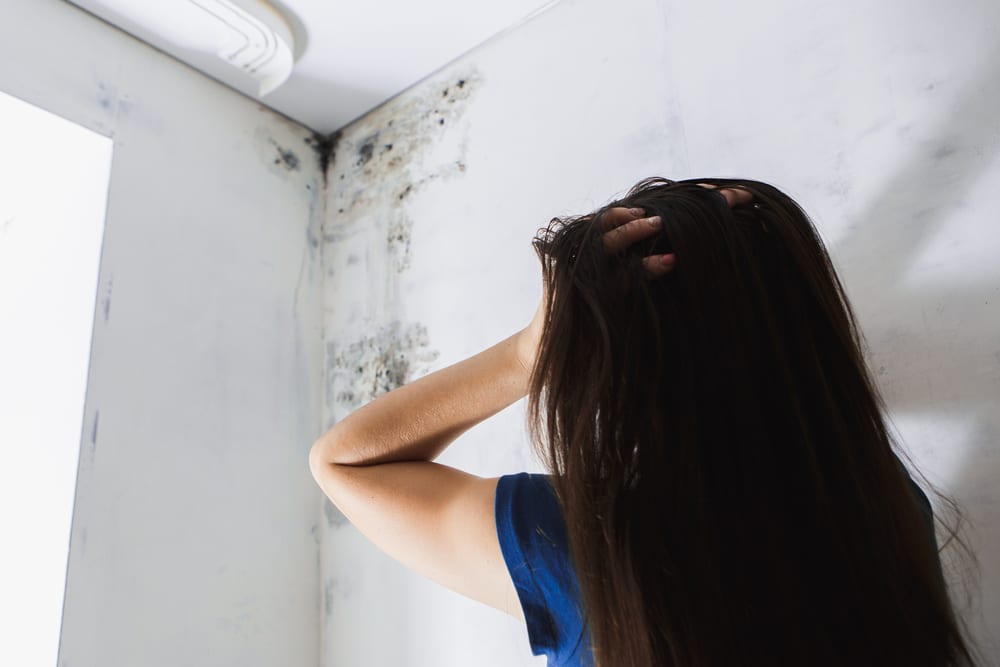Mold is more than just an unsightly nuisance; it can pose serious health risks and compromise the structural integrity of your property.
For homeowners in Chicagoland, where humidity and increasing temperatures can create ideal conditions for fungal growth, proactive maintenance is crucial. Spores can be found almost anywhere as long as moisture and oxygen are present, but they prefer damp, dark areas with temperatures greater than 70 degrees.
The good news is that mold growth is largely preventable through proper maintenance and vigilance. At PuroClean of Evanston, we’ve seen firsthand how devastating unchecked mold infestations can be, so we’ve put together this expert guide on keeping your home drier, healthier, and mold-free.
A Problematic Guest
In a 2022 report, the National Institute for Occupational Safety and Health Centers for Disease Control and Prevention estimated that around 47% of all homes in the United States have some mold present.
Mold can enter your home through doors, windows, vents, or HVAC systems, and microscopic spores in the air outside can be brought indoors via clothing, shoes, bags, or your beloved pets.
It can grow on various surfaces, including walls, ceilings, carpets, and furniture. While some molds are harmless, others can produce allergens, irritants, and even toxic substances known as mycotoxins.
The most common types of household mold include Aspergillus, Cladosporium, and Stachybotrys chartarum (also known as black mold). Prevention is key to maintaining both your property’s value and your family’s well-being.
Controlling Moisture Levels
The first step in keeping your home mold-free is controlling moisture. Mold and mildew need water to grow, so eliminating an excess of it is crucial. Here are some typical water intrusion culprits of Chicagoland homes:
- Leaky roofs or windows
- Poor ventilation in bathrooms and kitchens
- Flooding or water damage
- High indoor humidity levels
- Condensation on cold surfaces
Our unique climate can be challenging when it comes to maintaining optimal indoor humidity. Aim to keep indoor relative humidity between 30-50%. Here’s how:
- Use dehumidifiers in damp areas like basements
- Run air conditioners during humid summer months
- Bring in humidity-absorbing plants like the Peace Lily, Boston ferns, and English ivy
- Fix leaky plumbing promptly
- Use moisture-absorbing products in closets, bathroom cabinetry, and other enclosed spaces
Regularly inspect your property for signs of water intrusion or hidden leaks. Pay special attention to basements, crawl spaces, and attics; these areas are particularly welcoming homes for microbes and fungal spores.
Even minor drips can lead to significant mold problems if left unaddressed. Repair leaks promptly and consider waterproofing solutions for areas prone to moisture buildup.
Improving Circulation
Indoor air can be 2 to 5 times more polluted than outdoors, and the average person spends 90% of their time inside. Musty, stale, or contaminated air can carry not just mold but dust, VOCs, pathogens, and other harmful particulates and contaminants.
Maintain proper ventilation in your home by improving the airflow throughout the property. Open windows and doors regularly if possible, especially in your kitchen and bathroom during and after use. Invest in exhaust fans for bathrooms and laundry rooms to remove excess moisture.
Utilizing your HVAC system as well as high-quality household and ceiling fans can help keep the air moving and your home smelling fresh. It’s also vital to keep all vents unobstructed and change all air filters according to schedule.
Check Your Drainage
A big way to help prevent mold growth is to ensure you have adequate drainage all around your property. Grading your yard to direct water away from the foundation can be a lifesaver during extreme precipitation events.
Regularly cleaning your gutters is key to keeping excess rainfall from flooding your basement and creating a ripe environment for mold growth. Consider installing gutter guards to prevent clogs, and extend downspouts at least 5 feet away from any structures.
Keep It Clean
Clutter can restrict airflow and hide moisture problems. Keep your living space organized and clutter-free, especially in lower levels, closets, and storage areas.
Embracing a mold-defying cleaning routine can help you avoid the hassles and health concerns of dealing with a fungal infestation. Timely vacuuming, dusting, and wiping down both common and hard-to-reach areas keeps spores from finding a permanent welcome in your home.
Mold is very tenacious, and despite your most dedicated efforts, it can take hold in even the cleanest household. If you suspect a problem, it’s essential to seek professional help from a firm specializing in mold remediation, like the experts PuroClean of Evanston.
Our highly-trained technicians assess the situation, identify the source of moisture, and implement mold removal and property restoration strategies quickly and effectively. We utilize advanced techniques such as air quality testing, thermal imaging, and specialized cleaning solutions to ensure your family’s future health and comfort.
Don’t let mold and mildew freeload in your home — reach out to our 24/7 team today!




 PuroClean of Evanston
PuroClean of Evanston